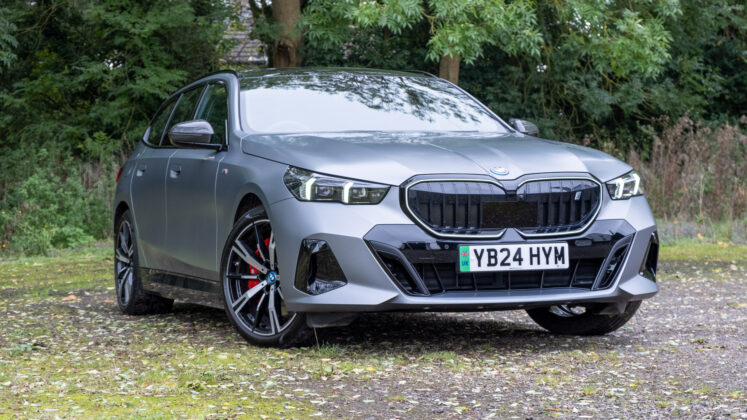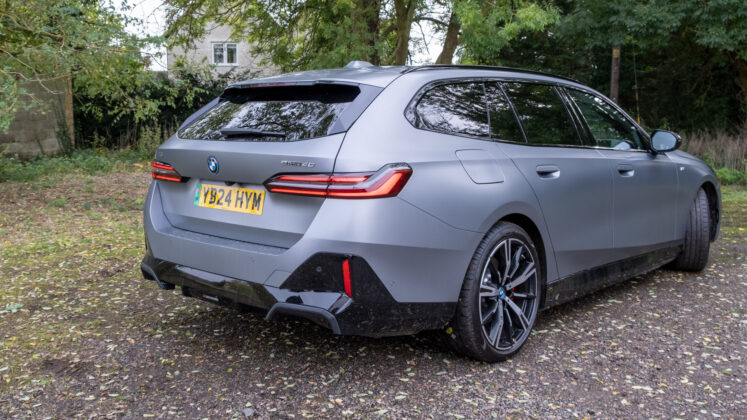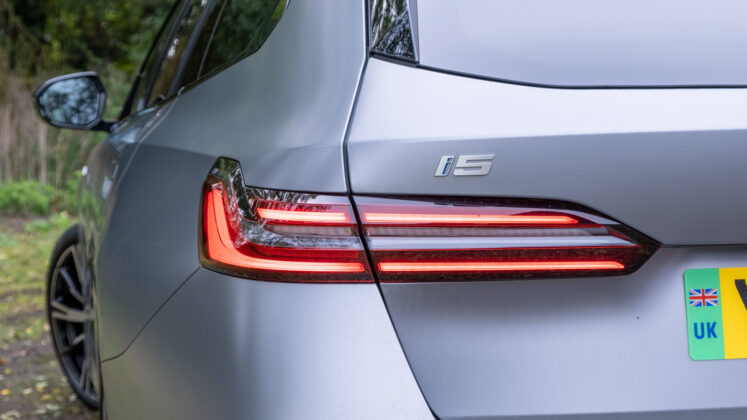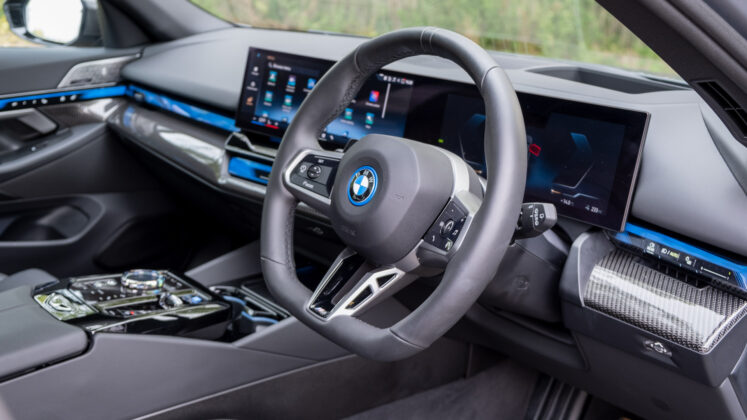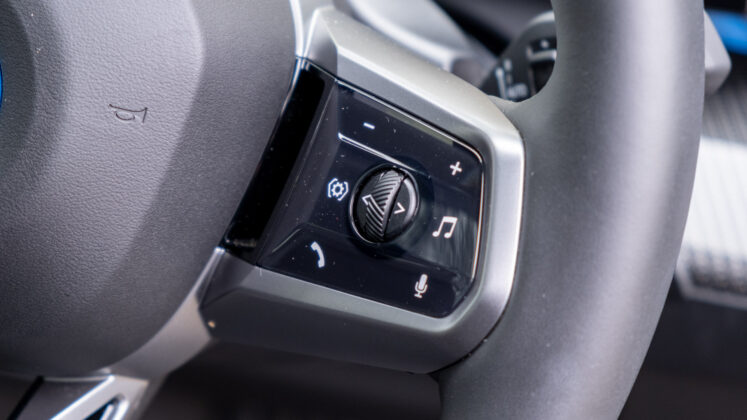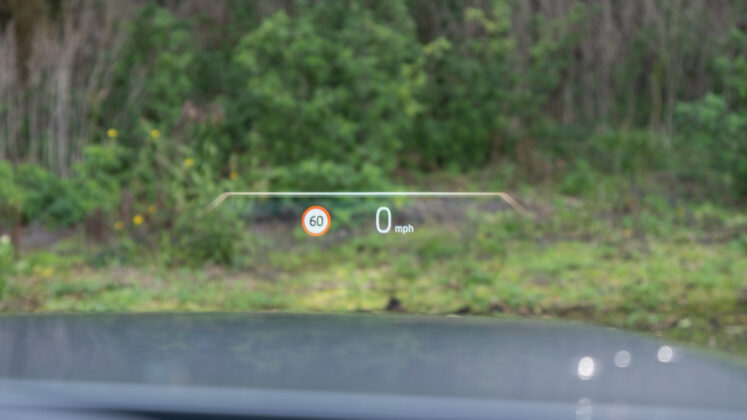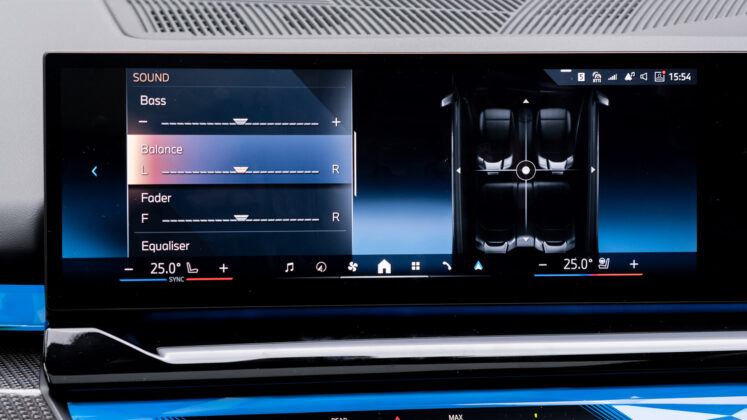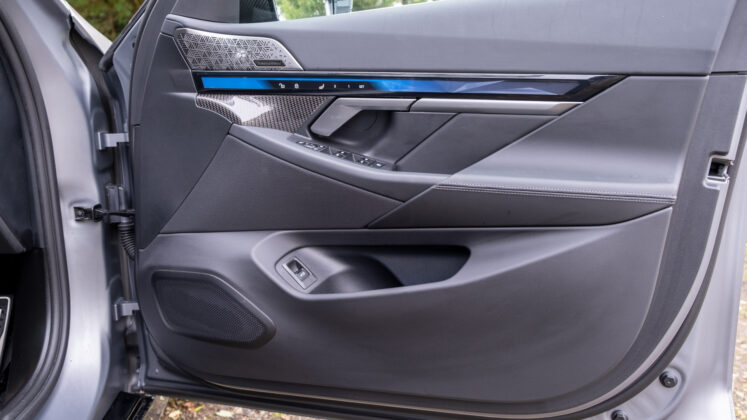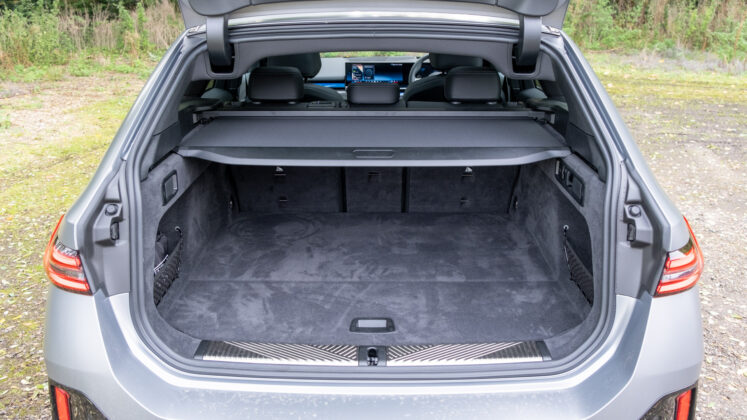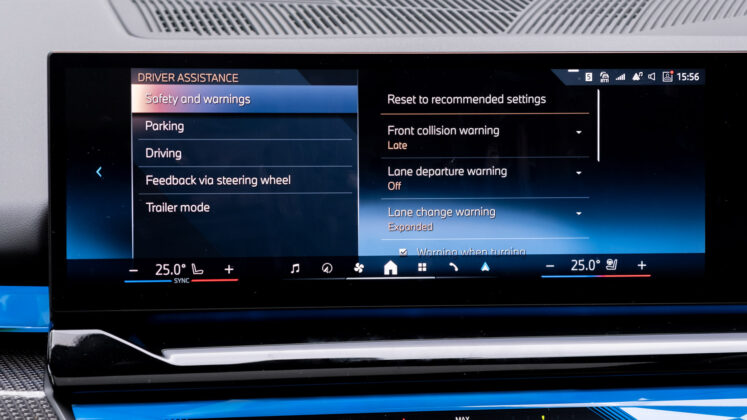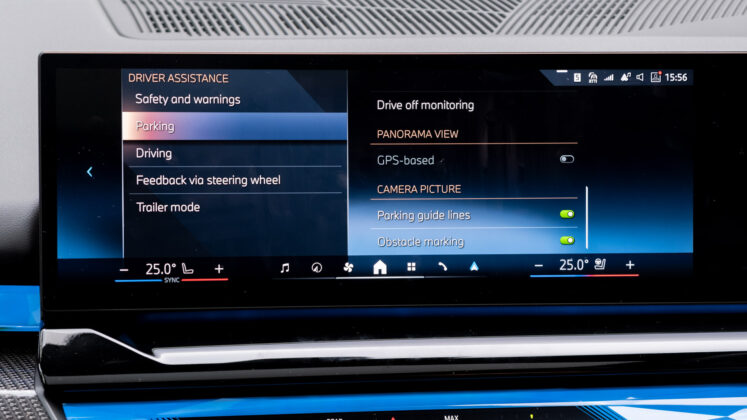The BMW 5 Series has been around since 1972. Now in its eighth generation (model code G60), it’s also offered as a fully electric vehicle, the i5, which was made available in 2023. Less than a year later, the estate was announced, also known as the Touring (G61). In the all-electric market, there are only a handful of alternatives, so it’s refreshing to see BMW offering its product to this sector.
If you’d prefer to watch a review of the BMW i5 Touring, head on over to our YouTube channel.
BMW i5 Touring price & competition
At the time of writing and in the UK, the i5 Touring is available in three trims: Sports Edition from £69,945, the M Sport/M Sport Pro from £76,355 and the M60 xDrive from £99,995. By comparison, the non-estate i5 model can be found for £67,695, £74,105 and £97,745, respectively.
The closest competitors are the Audi A6 Avant e-tron from £65,075 and the S6 Avant e-tron from £100,075. You’ll also find the Porsche Taycan Cross Turismo from £97,800, the Porsche Taycan Sport Turismo from £87,300, the Peugeot e-308 SW from £39,050 and the MG5 EV from £30,995.
Elsewhere there are a few saloons to consider: Polestar 2 from £44,950; BYD Seal from £45,695; Hyundai Ioniq 6 from £47,040; BMW i4 from £51,270; VW ID.7 from £51,550; Tesla Model S Plaid from around £100k; Audi S e-tron GT from £108,680.
You might also want to look at an SUV, such as: the Skoda Enyaq iV from £40,585; Volkswagen ID.4 from £42,640; Hyundai Ioniq 5 from £43,445; BMW iX1 from £44,560; Tesla Model Y from £44,990; Kia EV6 from £45,275; Peugeot e-3008 from £45,850; Audi Q4 40 e-tron from £50,745; BMW iX2 from £51,615; Genesis GV60 Sport from £58,365; BMW iX3 from £62,865; Jaguar I-Pace from £66,350; Audi Q8 e-tron from £67,800; and the BMW iX from £70,985.
Read next: BMW i4 review: Is the i4 eDrive40 better than the i4 M50?
BMW i5 Touring exterior review
Given its price tag, one might expect a luxurious exterior design, and indeed the i5 Touring has a sleek and aggressive look. At the front there’s a large-sized grille, which fits the vehicle’s profile; in the M Sport Pro and M60 models, it’s also illuminated, making it stand out over the cheaper trims.
From the side, body-coloured wheel arches create a nice-looking silhouette – 19″ alloys come fitted in the Sports Edition and M Sport models, with 20″ available as an option in the former and 21″ in the latter; the M Sport Pro and M60 have 20″ alloys with 21″ available as an option. Around the back, the i5 Touring is very much reminiscent of other modern BMW vehicles, with thin taillights and a sporty look, thanks to the built-in spoiler.
As for your colour options, depending on your chosen trim level there are a multitude to choose from, with prices ranging from £900 up to a stonking £5,000 for the Individual Frozen Portimao Blue finish. Pictured is the £3,300 Individual Frozen Pure Grey with the 20″ M light Alloy Wheels Star-spoke Style 938 M Bicolour Jet Black.
Read next: Audi Q4 e-tron review: Best electric Audi?
BMW i5 Touring interior review
Inside, the cabin is still exquisitely designed; from the stitching work on the upholstery, the materials used on the dashboard to the finish of the door frames. However, some might argue that all the materials used aren’t of the utmost quality and thus can’t compete with the likes of Porsche’s vehicles.
Nonetheless, there are a few different trims to choose from, allowing for bettered personalization. Perforated and quilted veganza seats come fitted as standard, with Merino Leather available as a £2,100 option.
The Interaction Bar, which has a crystalline design and spans the instrument and door panels, houses controls such as seat functions and air conditioning, and provides interior ambient lighting that doubles up as a visual indicator for certain events; such as when the the vehicle’s safety systems are in operation.
Should you want to extend the crystal glass look to the centre console, you’ll need to add an additional £600 on the ‘Crafted Clarity Interior Controls’. This brings us to practicality, as with or without said option you’ll find the circular iDrive controller, a rotary volume control and the gear selector switch. Physical buttons are found on the steering wheel, too.
The climate controls are unfortunately located on the curved 14.9″ infotainment system, which makes the controls less intuitive to adjust while on the move. Thankfully, the display itself is extremely responsive, vivid and intuitively laid out; once you get your head around the plethora of options, it becomes a breeze to use. Android Auto and Apple CarPlay are also both supported over a wired and wireless connection.
Better still, they conveniently display navigation data on the curved 12.3″ instrument cluster and the optional Head-Up Display. The latter is comprised within the £2,000 Technology Pack. Both the driver’s displays and HUD are customisable and provide all the key driving information you’d ever need.
Speaking of which, a punchy 12-speaker Harman Kardon audio system comes fitted as standard, but for a £1,250 option or as standard in the M60 model, you’ll find a 655-Watt 17-speaker Bowers & Wilkins system. A worthwhile upgrade, although, the B&W configuration isn’t as impressive as you might think. If you’d like to hear how it performs, watch our detailed review on YouTube.
BMW i5 Touring storage review
What stands out in the i5 Touring is the sheer amount of storage available. Inside the cabin, there’s the glove box, two wireless charging bays with a non-slip material at the top of the centre console, further down there are two cupholders that reside next to the two USB Type-C ports, and within the bi-folding centre armrest, there’s a little compartment with a 12V socket.
As for the door bins, the front two are large enough to accommodate a reusable 500ml bottle alongside some small-to-medium-sized goods, while the rear two are unsurprisingly a bit more limited. Disappointingly, none of the door bins are lined in fabric, which means loose change and keys will be heard rattling around when traversing on uneven terrain.
At the rear of the cabin, there’s a small non-slip area that’s found at the back of the centre and two cupholders comprised within the pulldown armrest compartment.
The key selling point, however, is its boot capacity. There’s 570 litres or a whopping 1,700 litres when you drop down the seats. That’s more than the regular BMW i5 which offers 490 to roughly 1,400 litres, respectively. Indeed, the i5 Touring has a large boot, which is what you’d come to expect in an estate.
In comparison to the other fully-electric estates, the Audi A6/S6 Avant e-tron offers 502/1,422 litres, the Porsche Taycan Cross/Sport Turismo 446/1,212 litres, the Peugeot e-308 SW 548/1,574 litres and the MG5 EV 479/1,367 litres.
As for the all-electric saloons: Tesla Model S Plaid (709/1,739 litres); VW ID.7 (532/1,586 litres); Tesla Model 3 (594/~1,300 litres); BMW i4 (470/1,290 litres); Hyundai Ioniq 6 (401/1,100-1,300); BYD Seal (400/1,100-1,300); Audi e-tron GT (405/~1,150 litres); Polestar 2 (405/1,095 litres); Porsche Taycan (366/~1,100 litres).
And the all-electric SUVs: Tesla Model Y (854/2,100 litres); Peugeot e-3008 (588/1,663 litres); Jaguar I-Pace (656/1,453 litres); VW ID.5 (549/1,561 litres); VW ID.4 (543/1,575 litres); Hyundai Ioniq 5 (520/1,587 litres); BMW iX3 (520/1,560 litres); Audi Q4 e-tron (520/1,490 litres); Genesis GV60 (432/1,550 litres); BMW iX2 (525/1,400 litres); BMW iX1 (490/1,495 litres); Kia EV6 (490/1,300 litres).
In terms of practicality, the BMW i5 Touring has 40:20:40 rear-split folding seats which are also electronically released from the boot, a flat loading bay, a sizable underfloor compartment that’s large enough to accommodate the vehicle’s charging cables and a hatchback design with an electric tailgate that comes fitted as standard. Unlike some of its rivals, there’s no frunk (a storage area at the front). This is, in part, due to the vehicle not being built from the ground up as an EV.
Read next: Tesla Model Y review: Best electric SUV?
BMW i5 Touring comfort review
Another issue that arises due to the vehicle not being exclusively built as an electric vehicle is the nonsensical inclusion of a transmission tunnel, which encroaches legroom, namely for the rear middle occupant.
That aside, the i5 Touring has comfortable and accommodating seats. Headroom and legroom for even taller 6-foot 2-inches (188cm) individuals is a non-issue at the front and rear of the cabin.
As for the seats themselves, the front two are heated and adjustable as standard. Should you want lumbar support for the driver in the Sports Edition, you’ll need to spend an additional £275. A heated steering wheel is also only included within the £1,200 Comfort Pack, which is quite ridiculous given the price tag of the vehicle.
Within the Comfort Pack Plus which costs £4,600 in the eDrive40 models or £3,350 in the M60 model, you’ll find heated rear seats, ventilated front seats with electronic controls and a tablet holder which includes a USB Type-C charging port at the rear portion of the front seats. As for the panoramic roof, which was fitted in the press vehicle, it’ll cost you an additional £1,600.
No matter your choice of options, the BMW i5 Touring has a serene cabin. The insulating materials are of high quality and the vehicle doesn’t suffer from too much road or tyre noise. In fact, it’s one of the quietest cabins we’ve tested, which is a real testament to what BMW has managed to achieve in its all-electric estate.
Read next: Hyundai Ioniq 6 review: Better Than Tesla, BMW & Polestar?
BMW i5 Touring performance review
Similarly, its suspension system is a work of art and to us, one of the key selling points of the i5 Touring. At the front, you have a double wishbone axle with a separated lower control arm level, while at the rear there’s a five-link axle and air suspension with automatic self-levelling. The combination yields a fantastic experience when you’re pottering around town, as it soaks up the anomalies, speed bumps and potholes.
If you choose to put your foot down to go around country roads at speed, you’ll also find that it responds extremely well. It’s planted to the ground, doesn’t suffer from any body roll or wheel spin, and also gives you that responsive driver’s input; not quite Porsche Taycan Cross/Sport Turismo levels, but close to it.
It is worth mentioning that the M Sport models have a lowered suspension by 8mm due to them being fitted with M Sport Suspension, which provides even sportier and direct handling characteristics. For an additional £2,400 in the M Sport models, you can go a step further with the Adaptive Suspension Profesional package, which lowers the suspension by 5mm and provides Integral Active Steering – rear-wheel steering that helps with stability, safety and comfort. This comes fitted as standard in the M60 model, but should that not suffice, the £4,000 M Adaptive Suspension Pro gives you active roll stabilisation among a few other things.
This brings us to performance. In the eDrive40 models, there’s a single motor planted on the rear axle which delivers 250 kW of power (340 hp) and 400 Nm of torque to the rear wheels only (RWD). The M60 xDrive has two electric motors and therefore operates on an all-wheel drive (AWD) configuration and outputs a staggering 442 kW of power (601 hp) and 795 Nm of torque. Top speed in the RWD model is set to 120 mph, while this moves up to 143 mph in the AWD M60.
Using Racelogic’s Performance Box Touch we had the RWD eDrive40 M Sport Pro tested from 0-20mph in 1.72 seconds, 0-30mph in 2.59 seconds; 0-60mph in 5.59 seconds; 50-70mph in 2.56 seconds and recorded a peak acceleration of 0.55g.
Note, that these figures were attained in Sport mode with Boost enabled, while in Launch Control (you get a rumbling sensation when you’re prepped to launch). By momentarily shifting on the singular flappy paddle found behind the wheel, one attains peak performance no matter which drive mode you’re in. Without it activated and outside of Launch Control, the vehicle operates at a lower power output; think of Boost mode as a shortcut to peak performance.
Buy a car phone mount on Amazon (Affiliate)
So, what about efficiency? BMW includes a heat pump as standard across the trim range, which helps achieve better efficiency by heating the cabin using dissipated hot air from the vehicle’s electronics and battery pack.
In terms of its electric range, BMW claims the eDrive40 models will achieve 326-340 miles, while the M60 sits at 280-310 miles. However, from our own mixed driving tests in the eDrive40 M Sport Pro, which include motorways, country roads and city driving, we netted 225-245 miles. By comparison, in the regular i5, we achieved 240-260 miles in the RWD BMW i5 eDrive40 and 210-230 miles in the i5 M60.
Those figures are respectable but fail to stand out. For context, the Porsche Taycan 4S Cross Turismo achieved 220-230 miles, the non-estate Peugeot e-308 170-190 miles, while the MG5 EV managed 210-230 miles. We’ve yet to test the Audi A6/S6 Avant e-tron, but on paper and from our experience of driving vehicles from the Volkswagen Group should achieve better results than the BMW.
Aside from the electric estates, here’s how some of its saloon-sized rivals compare: 310-330 miles in the Tesla Model 3 Long Range AWD; 300-320 miles in the RWD BYD Seal; 270-290 miles in the BYD Seal AWD; 260-280 miles in the VW ID.7 Pro; 255-275 miles in the Tesla Model 3 Long Range Performance; 250-270 miles in the Tesla Model S Plaid and AWD Hyundai Ioniq 6; 240-260 miles in the RWD BMW i4 eDrive40; 230-250 miles in the Audi e-tron GT; 225-245 miles in the Tesla Model 3 RWD; 200-210 miles in the AWD BMW i4 M50; and 190 miles in the Porsche Taycan Turbo.
As for the SUV class we achieved: 315-335 miles in the Tesla Model Y Long Range RWD; 325 miles in the VW ID.5; 275-295 miles in the Peugeot e-3008; 250-280 miles in the Tesla Model Y Long Range AWD; 260 miles in the Audi Q4 e-tron and VW ID.4 (no heat pump); 240-260 miles in the Kia EV6 RWD; 240-250 miles in the Jaguar I-Pace; 230-250 miles in the Hyundai Ioniq 5 AWD; 210-230 miles in the Genesis GV60 Sport+; 200-220 miles in the Genesis Electrified GV70; 180-200 miles in the Citroen e-C4 X and Ford Mustang Mach-E.
To be as efficient as possible you’ll want to enable a degree of regenerative braking, which allows the car to harvest kinetic energy when decelerating and helps charge the battery pack. B-mode, which can be easily initiated by shifting down on the gear selector found by the centre console, provides the maximum amount of deceleration when lifting off the accelerator pedal. It’ll also bring the vehicle to a complete standstill; an excellent addition when driving around town, especially considering many of its rivals omit this useful feature.
Should you not want a one-pedal drive, you can customise the behaviour of Drive (D) mode through the infotainment system. Here you’ll find Adaptive, High, Moderate and Low.
Of course, you can also plug it in. The i5 Touring takes up to 205 kW via its CCS port, which means you can attain a 10-80% charge in 30 minutes. As for its onboard charger, it’s rated at 11 kW but can be upgraded to 22 kW for £1,200 in the M Sport models while it’s fitted as standard in the M60. The former will take 8 hours 30 minutes to go from 0-100%, while the latter 4 hours 15 minutes. It’ll take longer if you use a regular 7 kW home wallbox or a 3-pin input.
Read next: Volkswagen ID.5 review: Germany’s best electric SUV?
BMW i5 Touring safety review
When it comes to safety the regular i5 was tested by Euro NCAP and was awarded the full 5/5 stars, scoring 89% in Adult Occupancy, 85% in Child Occupancy and 78% in Safety Assist. One might assume a similar rating with the Touring model.
In terms of your driver assistance systems, you have the following fitted as standard: Lane Change Warning, Rear crossing-traffic warning, exit warning, rear collision prevention and cruise control.
Should you want more, the £3,300 Technology Pack Plus adds: Steering and Lane Control Assistant, Emergency Stop Assistant, Distance Control and Stop & Go function, Automatic Speed Limit Assist, Lane Change Assistant, Lane Departure Warning, Front and rear Crossing Traffic Warning, Evasion Assistant assists, Wrong-way Warning, and Active Cruise Control (ACC) with Stop & Go function.
Note, that by long-pressing the SET button on the steering wheel you can quickly disable the speed limit warning, which gets re-enabled every time you power on the vehicle. However, the other systems, such as lane departure warning need to be disabled via the infotainment system, which can be a bit of a faff.
We found that the inclusion of these systems was fantastic, particularly ACC which helps keep the vehicle at a safe distance from the leading vehicle without feeling jerky. Steering and lane support are also appreciated as they provide a degree of autonomy – great for those mundane long-distance motorway commutes. With that said, these features should all be included as standard and having them locked behind a rather expensive pack is quite disappointing.
Speaking of which, the aforementioned option also adds 360-degree cameras, parking assistance and drive recorder. These options can also be found in the regular Technology Pack (non-Plus), which costs £2,000. The high-resolution cameras give you peace of mind when parking, while drive recorder gives you extra security by recording incidents. Yet again, one might have expected these to come fitted as standard, but alas that’s not the case.
What you do have, however, are parking sensors and a reversing camera. Both are much needed as visibility at the back of the vehicle is somewhat limited due to its elongated profile and small rear opening; the included rear wiper helps clear water and dirt, too. It’s easy to check your surroundings as there is a good view at the front and side of the vehicle.
As for manoeuvrability, it’s a breeze thanks to the responsive power steering and the 11.9 to 12.3-meter turning circle (11.7 meters with Integral Active Steering). Handy as the i5 Touring measures 2156mm in width including the mirrors (1900mm without), has a wheelbase of 2995mm and a length of 5060mm.
Read next: New Tesla Model 3 review: RWD vs Long Range vs Performance
TotallyEV’s verdict on the BMW i5 Touring
On the whole, the BMW i5 Touring is a luxurious, comfortable, practical and engaging vehicle to drive. However, the automaker’s fully-electric estate isn’t perfect with its somewhat lacklustre electric range, a limited number of standardized features and of course, a steep asking price.
As such, you might want to invest a little more to get better driving dynamics in the Porsche Taycan Cross/Sport Turismo or save a lot of money by getting something a little less luxurious and comfortable in the Peugeot e-308 SW or even the MG5 EV. You could also get Audi’s A6 Avant e-tron or S6 Avant e-tron, which on paper, should yield better electric range or even consider an all-electric SUV instead.
What do you make of the i5 Touring? Let us know in the comments section below or via social media; we’re on: YouTube, Instagram, Facebook, X and LinkedIn.


